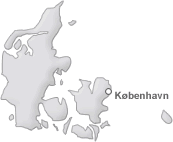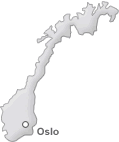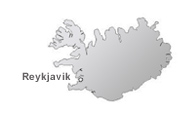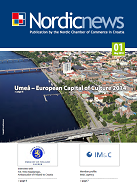About Nordic Countries
![]() Denmark:
Denmark:
Denmark is situated in the north of Europe, bordering the Baltic Sea and the North Sea. The total size of its territory is 42,394 sq km and it has 5.432,335 inhabitants. Denmark is a constitutional monarchy, with Copenhagen as its capital.
Denmark represents a modern market economy and features high-tech agriculture, up-to-date big and small-scale corporate industry, extensive government welfare measures, comfortable living standards, a stable currency, and high dependence on foreign trade.
Denmark is a net exporter of food and energy and enjoys a comfortable balance of payments surplus. Its GDP per capita amounts to $32,200 (PPP).
![]() Finland:
Finland:
Finland is situated in the north of Europe, bordering the Baltic Sea, Gulf of Bothnia, and Gulf of Finland. The total size of its territory is 304,473 sq km and it has 5.223,442 inhabitants. Finland is a republic, with Helsinki as its capital. Finland has a highly industrialized, largely free-market economy. Its key economic sector is manufacturing - principally wood, metals, engineering, telecommunications, and electronic industries. Trade is important, with exports equalling two-fifths of GDP, excelling in high-tech. Its GDP per capita is $29,000 (PPP).
![]() Sweden:
Sweden:
Sweden is situated in the north of Europe, bordering the Baltic Sea, Gulf of Bothnia, Kattegat, and Skagerrak. The total size of its territory is 410,934 sq km and it has 9 001 774 inhabitants. Sweden is a constitutional monarchy, with Stockholm as its capital.
Sweden has achieved an enviable standard of living under a mixed system of high-tech capitalism and extensive welfare benefits. It has a modern distribution system, excellent internal and external communications, and a skilled labour force. Timber, hydropower, and iron ore constitute the resource base of an economy heavily oriented toward foreign trade. Its GDP per capita is $28,400 (PPP).
![]() Norway:
Norway:
Norway is situated in the north of Europe, bordering the North Sea and the North Atlantic Ocean. The total size of its territory is 307,860 sq km and it has 4.593,041 inhabitants. Norway is a constitutional monarchy, with Oslo as its capital.
The Norwegian economy is a combination of free market activity and government intervention. The government controls key areas, such as the vital petroleum sector (through large-scale state enterprises). The country is richly endowed with natural resources - petroleum, hydropower, fish, forests, and minerals - and is highly dependent on its oil production and international oil prices, with oil and gas accounting for one-third of exports. Its GDP per capita is $40,000 (PPP).
![]() Iceland:
Iceland:
Iceland is an European island in the North Atlantic country with the total size of 103,000 km². It has around 313.000 inhabitants of which the vast majority lives in the capital, Reykjavik, and surrounding areas. Iceland is a republic, has a written constitution and a parliamentary form of government. Country’s economy has strong foundations in fisheries, natural renewable energy sources and human capital. Its GDP per capita is $ 39,800 (PPP, 2009).
* country maps are not shown in scale


























